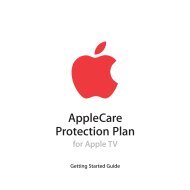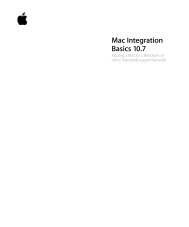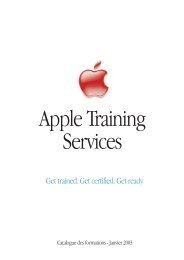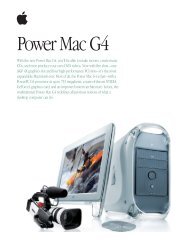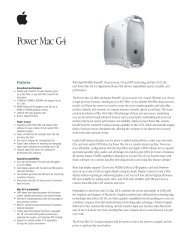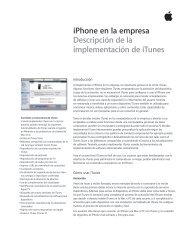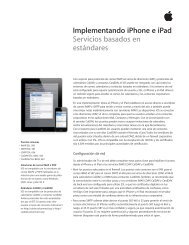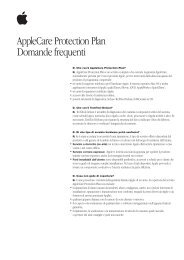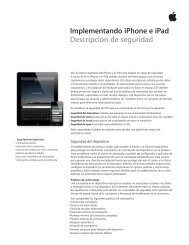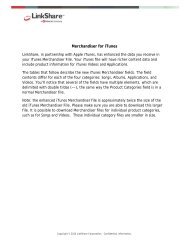In-House App Development Accelerator Guide - Apple
In-House App Development Accelerator Guide - Apple
In-House App Development Accelerator Guide - Apple
You also want an ePaper? Increase the reach of your titles
YUMPU automatically turns print PDFs into web optimized ePapers that Google loves.
Design matters. Creating a basic iPhone or iPad app is easy. However, highly successful apps take a<br />
little more e∂ ort. What makes the most successful apps appealing? They have an attractive design<br />
and make excellent use of colors and audio, they’re simple to use and work as expected, they keep<br />
the user involved, and they keep the user coming back again and again. By paying close attention to<br />
design when you build a new app or enhance an existing app, you can increase its appeal, create a<br />
more engaging user experience, and make your app delightful to use.<br />
This chapter describes some strategies you can use to refi ne your idea, review your design options,<br />
and determine an app design that will make your users more productive.<br />
Design for Touch<br />
Design<br />
Designing a user interface for interaction with the mouse is very di∂ erent than designing for touch.<br />
As you begin designing an app, you’ll want to understand what makes iOS devices unique. Spend<br />
some time with an iPhone or an iPad and get familiar with the user interaction and interface design<br />
conventions.<br />
At a basic level, for touch interaction you need more pixels to represent a selectable button for a<br />
fi nger than you would for a mouse in the desktop environment. For example, the comfortable minimum<br />
size of tappable UI elements is 44 x 44 points. Elements like pull-down menus or scroll bars that<br />
are common on the desktop don’t work well on a mobile device that’s designed for touch.<br />
Read the Human <strong>In</strong>terface <strong>Guide</strong>lines<br />
The iOS Human <strong>In</strong>terface <strong>Guide</strong>lines describe the principles that help you design a superlative user<br />
interface and user experience for your iOS app. These principles are just as important for enterprise<br />
in-house apps as they are for apps built for the <strong>App</strong> Store.<br />
Planning • Design • <strong>Development</strong> • Deployment<br />
Design Checklist<br />
By the end of the design phase, you should have accompished the<br />
following:<br />
Read the iOS Human <strong>In</strong>terface <strong>Guide</strong>lines from <strong>App</strong>le<br />
Established a concise feature list that’s directly aligned to your core<br />
application defi nition statement<br />
Prioritized a list of objects, tasks, and concepts and how they relate to<br />
one another<br />
Created a baseline set of wireframes and rough compositions to visualize<br />
the app journey<br />
“ One of the ways we ensure consistency in our apps<br />
is that we follow the <strong>App</strong>le HIG, the Human <strong>In</strong>terface<br />
<strong>Guide</strong>lines. It really helps make sure that we have<br />
consistency app to app. There’s still lots of di∂ erent<br />
design styles we can choose from, and we also make<br />
sure that those have a consistent theme running<br />
through them. But following the HIG is very important<br />
for us.”<br />
—Todd Schofi eld, Standard Chartered Bank<br />
11



